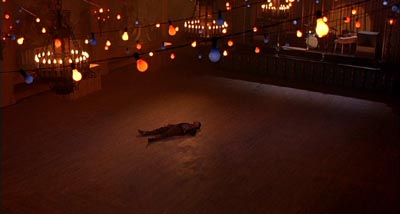|
When people challenge me to name the most underrated filmmaker in the world, I often think of Gregory Nava. When people say "never heard of him", I crow that this proves my point, because he's one of the better filmmakers of the past twenty years, and nobody ever heard of him. He wrote the following films:
He directed all of them except Frida. If he had decided to branch out to broader subjects, which is to say if he hadn't pigeonholed himself as a Latino filmmaker and a specialist in the immigrants of Mexico and Central America, he might command the kind of respect and name recognition that Cameron Crowe receives. Nana's very best work seems to me to have something powerful in common with Crowe's - the struggle to retain one's basic humanity in situations which tend to strip away that humanity. Both men focus on the theme of holding on to one's soul in a soul-destroying environment. Crowe tries to find real people beneath the facade of big time rock and sports, or in the interaction of kids in high school. Nava chose the special situation of Latinos trying to settle into a California culture that doesn't much want or respect that settlement. The members of "My Family" are deported, incarcerated, given inferior medical care, treated as second-class citizens, assumed guilty until proven innocent, and are never considered worthy of marriage to the cream of California's Anglo society. And yet the story probes into the underlying humanity of the characters, without denying or excusing their often contemptible acts, and without decrying the society's even more reprehensible actions toward them. They are neither villains nor victims. They are simply people. Mi Familia centers around a large group of siblings of various ages who grew up in East L.A. from about 1950 to 1980. Each of them became kind of an archetype of one facet of the Latino assimilation. One son was a charismatic gang leader. One daughter became a nun and political activist, then left the order and married an Anglo priest. One daughter settled into marriage and her husband's restaurant business. One son became a top lawyer. One son was a straight-arrow who joined the navy, then became the writer who wrote the very story we are watching. The youngest son adored that particular older brother who was a gang leader, and he never got over the bitterness he felt when he saw the police gun his brother down, an anger which was exacerbated when his own wife died in childbirth. Interwoven with the saga of the primary generation were the family's legendary tales of their father and mother, each of whom walked to California from deep in Southern Mexico. Other tales of the semi-mythical past involve a great uncle, El Californio, a man of indeterminate age who was the first in their family to be born and to live in California, and to whose home all the others eventually gravitated. The film concludes with the story of the youngest son who, having grown up and become a two-time loser, tried to relate to his own humanity and to a son of his own, whom he had earlier abandoned. The uniformly excellent cast includes some of the top Latino actors in the biz: Jimmy Smits (who could easily have received an Oscar nomination for his work here), Edward James Olmos (as the writer who narrated the film), and J-Lo, to name but three. |
|
|
|
|


